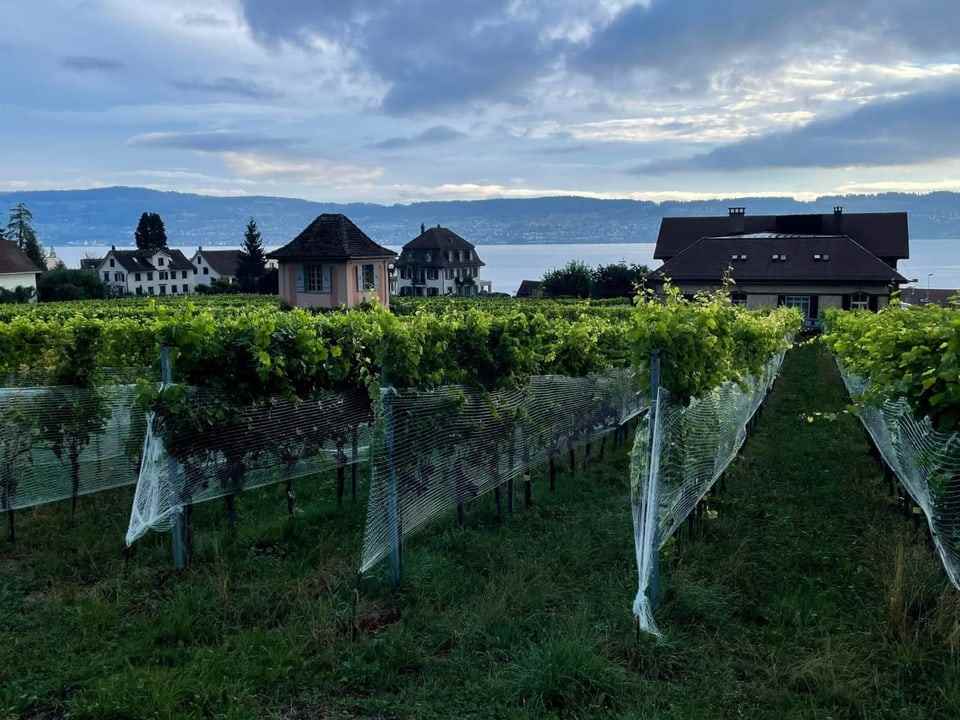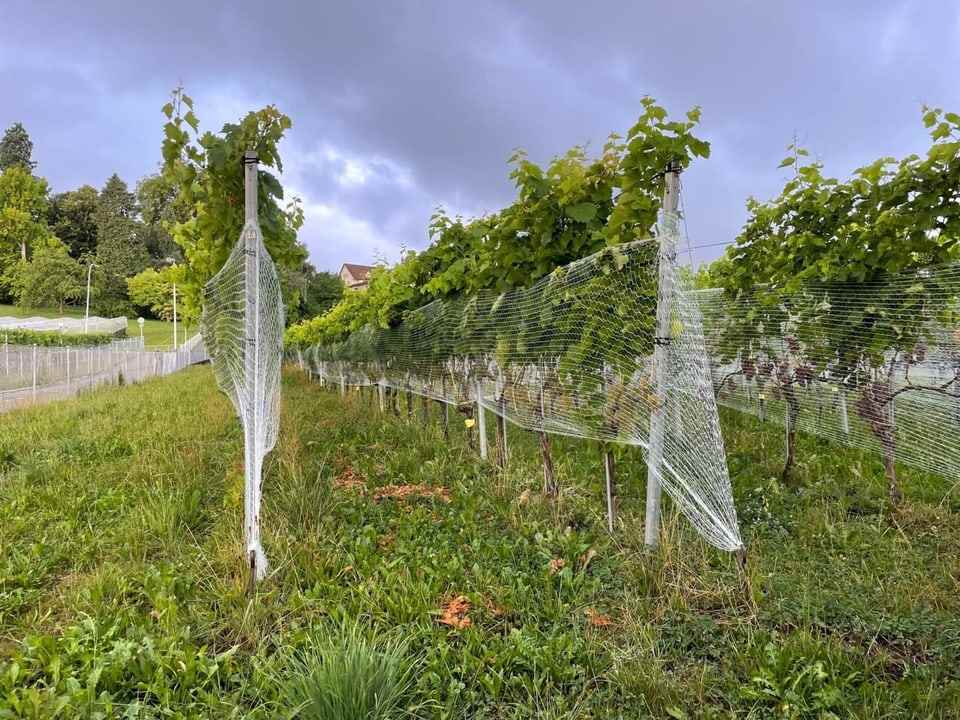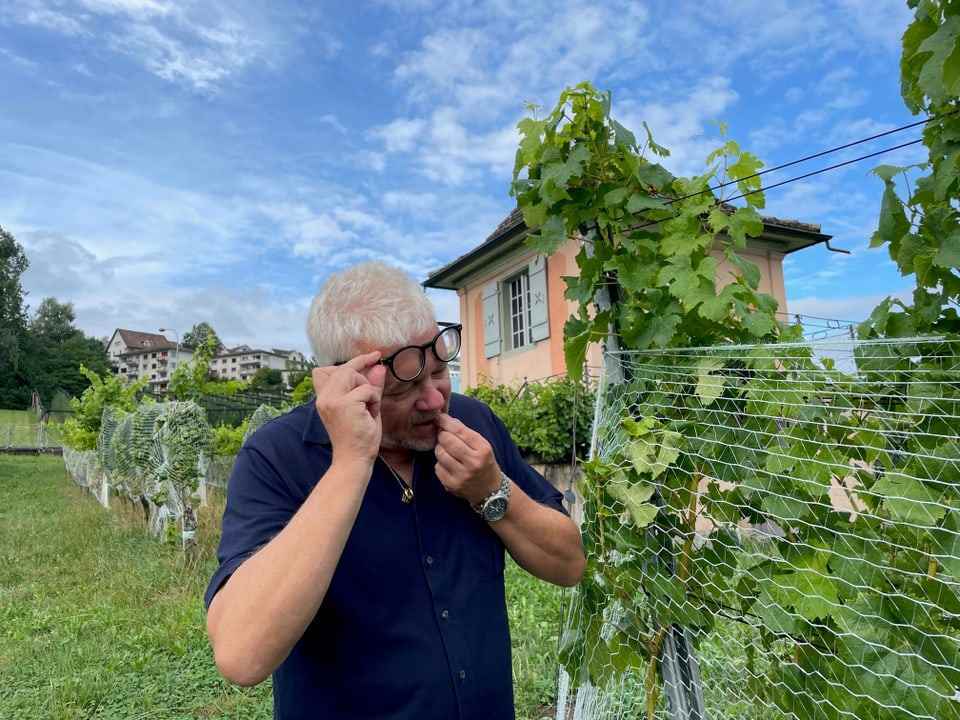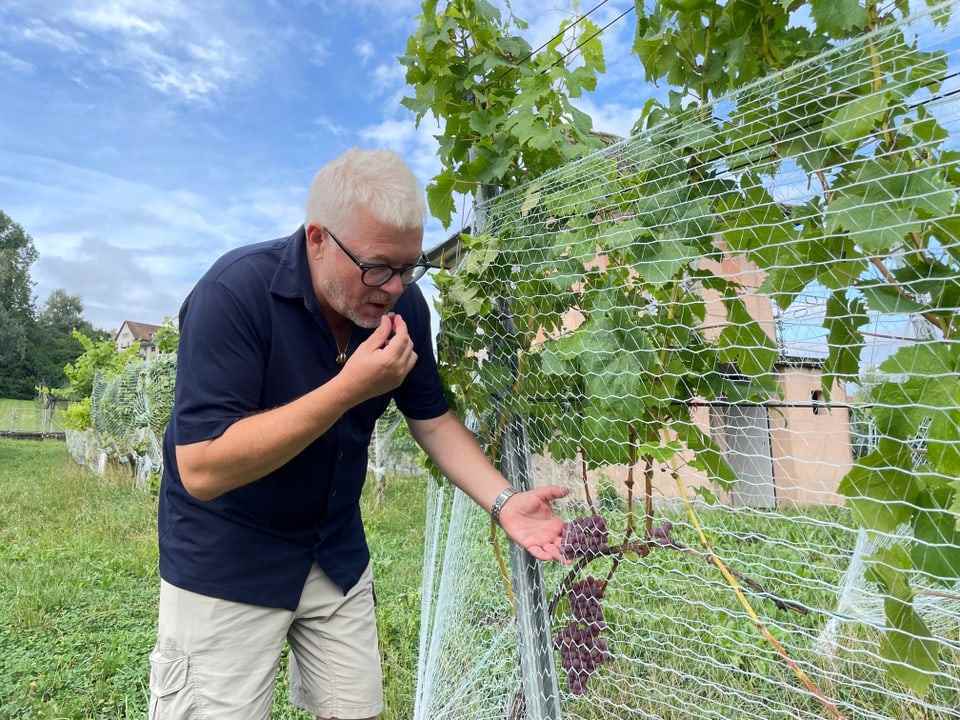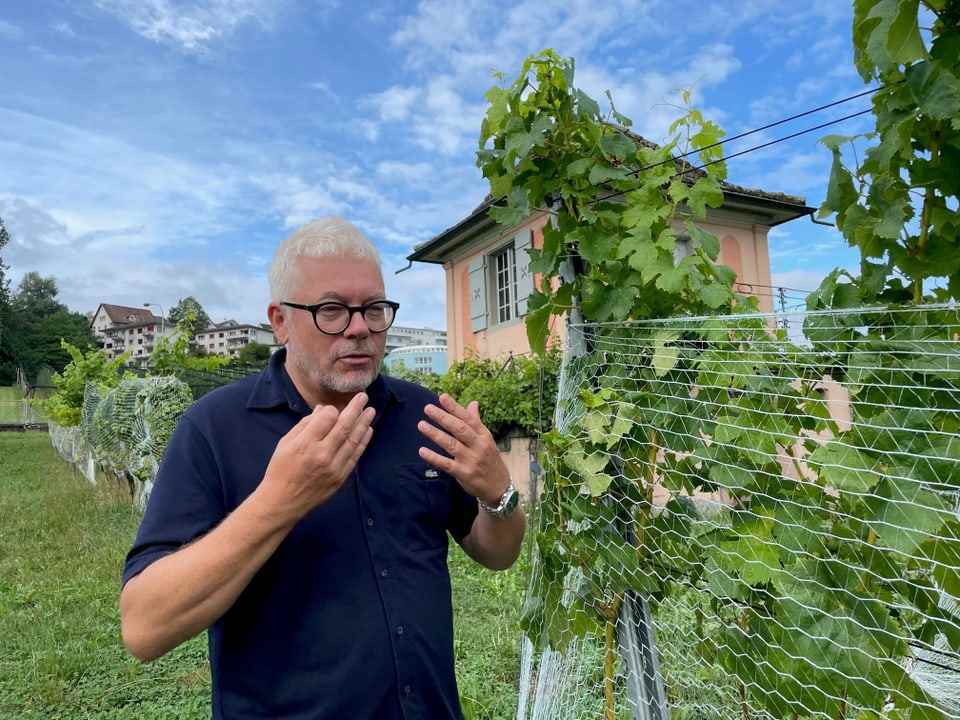contents
Due to the hot summer, the grapes are ripe a month earlier than usual. The Tuscan conditions call for new grape varieties. But that’s a risk.
In the vineyards of the Weinbauzentrum Wädenswil (WBZW), experts are researching the future of viticulture together with Agroscope, the federal research center for agriculture. It rained this morning. Martin Wiederkehr is a co-founder of the WBZW and moves from vine to vine. A little rain doesn’t hurt. But not too much before harvest.
“We don’t want the grapes to just inflate and fill with water, we want to have a concentration of sugar and flavorings so that we can then bring this excellent quality into the bottle,” he says.
The changed climate has a direct impact on the quality of the grapes, confirms Wiederkehr. “We notice this primarily because we have very high sugar gradations.”
Higher temperatures, more pests
The potential alcohol levels in the wines are now between 13 and 14 percent by volume. This is comparable to the climate in Tuscany 30 years ago. That also makes the wines from German-speaking Switzerland competitive, says Wiederkehr.
For the winegrowers, however, the change also means that they have to adapt to the new conditions; more heat, but possibly also more infestation by pests. It is important to find the right grape varieties for these conditions.
But changing a grape variety in a vineyard is a very lengthy project. Because a vine has a lifespan of 25 years. Accordingly, the development of new grape varieties takes a long time. Return points to a Divico vine, a multi-resistant new breed from Agroscope.
“It takes 25 years for it to make it into a larger field test, and it usually takes another 25 years for it to reach the consumer.” But the costs also play a major role when planting new ones: “Replanting a hectare of vines costs around 100,000 Swiss francs.”
If you take such a risk, you would do well to prepare well.
In order to be able to run a viticulture business in German-speaking Switzerland to some extent, you need between four and five hectares of vines, says Wiederkehr. “If you take such a risk, you would do well to prepare well.”
Less and less wine is being drunk in Switzerland, and competition from abroad is fierce. If you want to survive, you need perfectly pressed wines and must meet the taste of the customers, says the wine and marketing specialist.
Know today what will be in demand tomorrow
And they have to be able to hold their own against established varieties such as Pinot Noir or Räuschling, says Wiederkehr. “The simplest option is always when you talk to your customers in the bar and say: ‘I’ve got something new, can you give me feedback on whether that’s something?'”
Winegrowers who invest in their vineyards today will only achieve their first yields in a few years. And they now have to weigh up what tastes and ecological conditions will be like in the coming decades. Attributes such as “low-emission” and “organic” could play an important role.
audio on the subject
videos on the subject

